
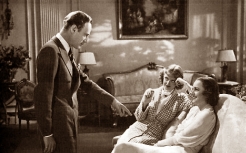
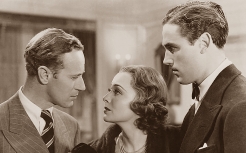
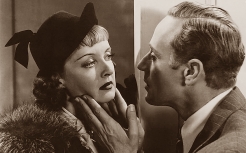

It's Love I'm After (1937)
| Production Company: | Warner Brothers Pictures |
| Director: | Archie Mayo |
| Writers: | Maurice Hanline (Story) |
| Casey Robinson (Screenplay | |
| Cast: | Leslie Howard (Basil Underwood) |
| Bette Davis (Joyce Arden) | |
| Olivia DeHavilland (Marcia West) | |
| Patric Knowles (Henry Grant) | |
| Eric Blore (Digges) | |
| George Barbier (William West) | |
| Spring Byington (Aunt Ella) | |
| Bonita Granville (Gracie Kane) |
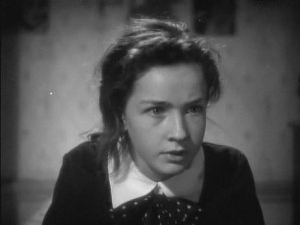
Child actress BONITA (“Bunny”) GRANVILLE was born into a theatrical family, and already had years of stage experience before making her movie debut at 9 in Westward Passage (1932). Her startlingly intense portrayal of a vicious school girl in William Wyler’s These Three (1936) brought her a nomination for the Best Supporting Actress Oscar, making her the youngest person (14) ever nominated at the time. (Though the Juvenile Academy Award existed from 1935-1961, some child performances continued to be nominated in the adult categories if the overall film was adult in nature. The others include 11-year-old Brandon De Wilde for Shane in 1953, 17-year-old Sal Mineo in 1955 for Rebel Without a Cause and 11-year-old Patty McCormack for The Bad Seed (1956) – none of whom won. When 16-year-old Patty Duke won Best Supporting Actress for The Miracle Worker (1963) in competition against adult actors, the juvenile award was finally scrapped.)
Bonita’s role in These Three brought her a contract at Warner Brothers and also typed her as a brat (she appeared in It’s Love I’m After during this period).
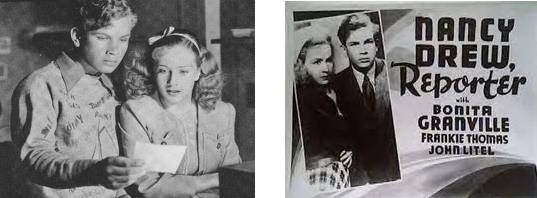
Bunny broke away from the brat roles in 1938, when she was cast as a girl reporter from a very popular series of books – bright, spunky Nancy Drew. She made a quartet of Drew movies, co-starring Frankie Thomas as her exasperated boyfriend Ted and Warner Brothers veteran second-string actor John Litel as her dad, attorney Carson Drew.
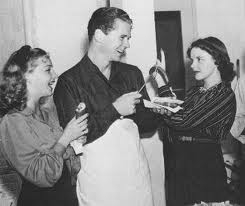
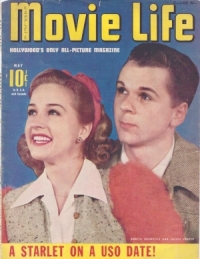
The success of these low-budget films brought her a contract with prestigious MGM in 1940, but the move ultimately stifled her. Though she made notable films on loan-out to other studios, including Now, Voyager (1942) and Hitler's Children (1943), her work at MGM was primarily in supporting roles. Like most MGM starlets, she appeared with Mickey Rooney in Andy Hardy films, but that led nowhere. Granville grew to be barely five feet tall, which also limited her entree into adult roles.
Bunny never achieved a breakthrough as an adult actress, but ultimately it didn’t matter. After marrying oil millionaire (and later producer) Jack Wrather in 1947, she retired from acting. Their long marriage produced four children. She and Wrather owned the Disneyland Hotel, among other lucrative business ventures. They also produced various TV series – one very big one in particular.
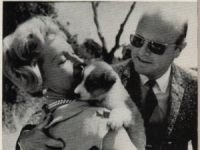
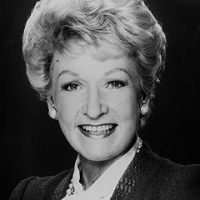
As a child, Bunny was seriously afraid of dogs. This posed a problem when her role in the film Beloved Brat (1938) required a great deal of work with one. To alleviate her fears, her mother bought her a cute, non-threatening pet Pekingese, and Bonita soon discovered she liked dogs very much. Eventually her fondness for dogs paid off handsomely. In 1954, Bonita saw a likely prospect for TV, bought the rights and became producer of that perennial favourite, Lassie.
She played the occasional part on the series, and sometimes narrated episodes. In addition to producing, she was the chair of the American Film Institute and active in many charitable causes. Widowed in 1984, she died of cancer four years later at 65.
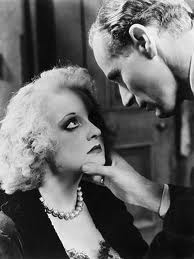
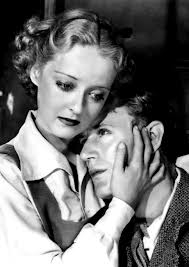
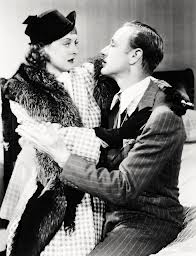
LESLIE HOWARD and BETTE DAVIS made three films together during his time spent working in Hollywood, but they hardly constituted a screen team. They were not personally close, and there is no evidence that they ever warmed to each other. She recalled that, at their first meeting, “He and his English colleagues on the picture were appalled at the idea of an American girl being cast as a cockney.” Perhaps this started them off on the wrong foot. The films they made were also each very different, so they did not become identified together in any one genre. The first, Of Human Bondage (1934) showed the stark realities of a sick interpersonal relationship. The second, The Petrified Forest (1936) was a timely parable about hope for redemption despite the vicious onslaught of the Depression. Their last, It’s Love I’m After (1937) is a bright screwball comedy about a squabbling showbiz couple.
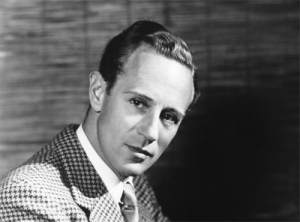
Widely considered the perfect film Englishman – tall, slim, cerebral and introspective – LESLIE HOWARD was actually the son of Hungarian immigrants. He was born Leslie Howard Steiner in London, in 1893. He was a quiet, shy boy who considered being a writer, but found he lacked the necessary self-discipline. Howard led an average middle-class life until the onset of World War I, when he left his job as a bank clerk to join the army. He was invalided out in 1917, suffering from severe shell shock (now called PTSD). Since he had enjoyed theatrics as a schoolboy, doctors suggested he take up acting again as therapy. He described his ensuing career as “the metamorphosis of a nervous, inhibited, agoraphobic individual who had other ambitions altogether into a quite successful actor.” Unlike some stage actors, Howard enjoyed making films and enthusiastically embraced both stage and screen. His years spent working in America came to an end when Britain went to war. After completing Gone With the Wind in 1939, he returned to England and spent the rest of his life working for the war effort. He became a casualty of the war when the passenger plane he was on was shot down by the Nazis in 1943. His son, actor Ronald Howard, got his start with a small role in his father’s wartime drama Pimpernel Smith (1941) and is best known for playing Sherlock Holmes in a 1950s British TV series. Howard’s daughter, Leslie Ruth Dale-Harris, lived in Toronto with her husband and three children. In 1960, her biography of Howard, A Quite Remarkable Father, was published.
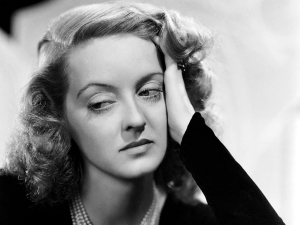
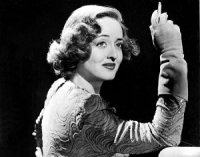
BETTE DAVIS had a very strong personality, much more competitive than collegial, and it often made her difficult to get along with. Even as a child, she was driven: “I always had the will to win,” she said. “I felt it baking cookies. They had to be the best cookies anyone baked.” Her lifelong friend Joan Blondell saw the toll it took on Davis: “When you have that kind of ambition, it’s a lot of pressure. You’re always afraid of losing what you have. Bette hung on hard for a long time. She had the greatest talent, but you can have that and still not make it, or not be able to keep it.” Good friends knew not to take Bette’s extremes too seriously. Joan said her friendship with Bette never changed, “even when she became just about the biggest star in the world, and even when we didn’t see each other for years. Once you were friends with Bette, you were always friends. She was a straight-shooter, never jealous, never catty or a gossip. She was a true friend, and those don’t grow on any trees I’ve known, especially Hollywood trees.”
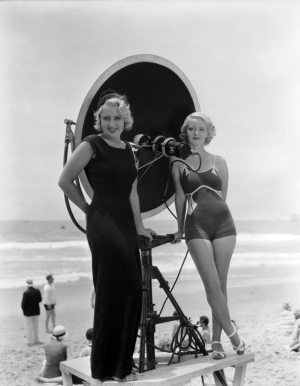
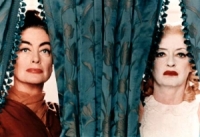
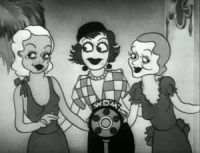
Among those who did not get along with Davis was Joan Crawford. The two had very different motivations. Bette wanted to be the best actress on earth, while Joan’s preoccupation was being a star. The animosity pre-dated their work together in Whatever Happened to Baby Jane? (1962) by at least 20 years. From the time Crawford moved over to Warner Brothers from MGM in 1943, they truly detested each other. Bette’s view of Joan’s success was succinct: “She’s slept with every male star at MGM, except Lassie.” Crawford told an interviewer “I resent her. I don't see how she built a career out of a set of mannerisms, instead of real acting ability. Take away the pop eyes, the cigarette, and those funny clipped words and what have you got? She's phony, but I guess the public really likes that.”
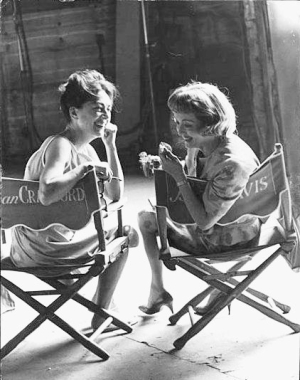
The ill-will extended even beyond the grave. In 1977, asked for a comment after Crawford’s death, Davis replied, “You should never say bad things about the dead. You should only say good. Joan Crawford is dead. Good.”
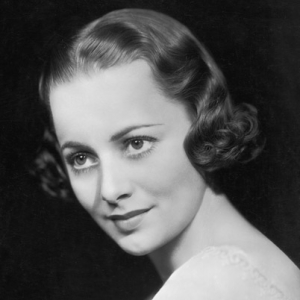
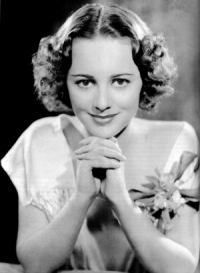
Two very tough cookies – Bette Davis and James Cagney – tried to stand up to the draconian contracts imposed by Warner Brothers and failed. It was beautiful, gentle, dark-eyed OLIVIA DE HAVILLAND who took her case against the studio to court on behalf of actors’ rights and won, in the 1944 “De Havilland Decision.” She has always been much more than just another pretty face. She is one of the most intelligent women ever to grace Hollywood movies, and a lot tougher than they gave her credit for.
Olivia had the sense to see the opportunity in parts others avoided: “Playing good girls in the '30s was difficult, when the fad was to play bad girls. Actually I think playing bad girls is a bore; I have always had more luck with good girl roles, because they require more from an actress.”
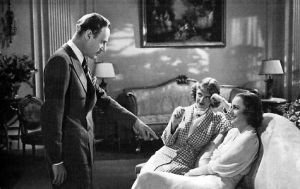
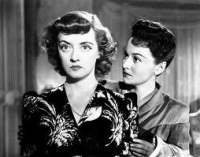
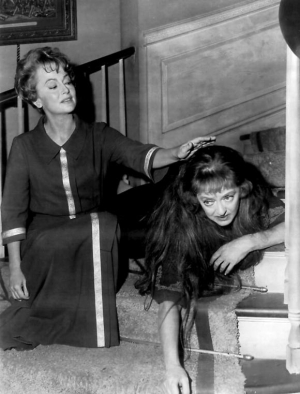
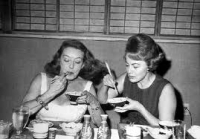
Like Joan Blondell, Olivia was a close friend of Bette Davis: “The great lesson I learned from Bette was her absolute dedication to getting everything just right. She used to spend hours studying the character she was going to play, then hours in make-up ensuring that her physical appearance was right for the part. I have always tried to put the same amount of work into everything I've done.”
They worked together several times, but their final film was not to Olivia’s tastes. In 1964, “I was offered the chance to work with her on the film that became Hush...Hush, Sweet Charlotte when Joan Crawford withdrew. Bette wanted it so much, so I did it. I can't say I regretted it, because working with her was special, but I can't say it was a picture I am proud to put on my resume.”
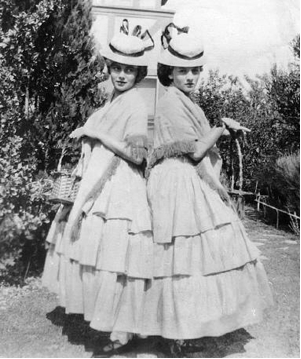
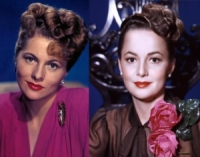
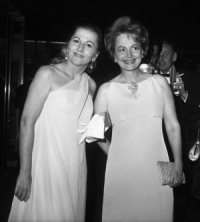
Like Bette, Olivia is also part of a famous movie feud, this one based on lifelong sibling rivalry. Olivia and her younger sister, Joan Fontaine, are only a year apart in age but have never gotten along. (Evidence? Well, when Olivia was 9 year old, she made a will which stated “I bequeath all my beauty to my younger sister Joan, since she has none.”)
Their already-shaky relationship was strained when both were nominated for the Best Actress Academy Award in 1942, and the press made much of sisters in competition. Joan won, for Suspicion, but a few years later Olivia outdid her by winning the award twice, for To Each His Own (1946) and The Heiress (1949). They are the first sisters to win Oscars. Olivia retired almost entirely from acting in 1953, and moved to Paris. In 2004, when asked if she missed acting, she replied, “I don't need a fantasy life as once I did. That is the life of the imagination that I had a great need for. Films were the perfect means for satisfying that need.”
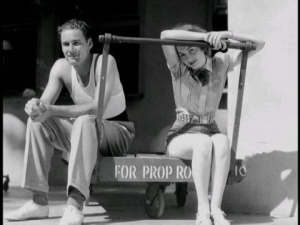
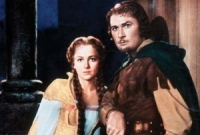
Film work offered other attractions, too: “I had a very big crush on Errol Flynn during Captain Blood. I thought he was absolutely smashing for three solid years, but he never guessed. Then he had one on me, but nothing came of it. I'm not going to regret that; it could have ruined my life.”
Olivia is the last remaining star of Gone With the Wind (1939). She says she felt it “would last five years, and it's lasted over 70, and into a new millennium. There is a special place in my heart for that film, and Melanie. She was a remarkable character – a loving person, and because of that she was a happy person. And Scarlett, of course, was not. It's terribly well constructed. Something happens every three minutes, and it keeps you on your toes and the edge of your seat, which is quite a feat, I must say.”
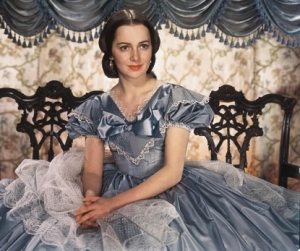
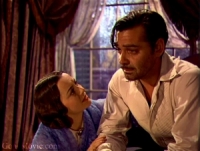
She is credited for convincing Clark Gable to cry on camera in the scene following the death of his daughter, something he was very reluctant to do. “I talked with him and convinced him that the tears denoted strength of character, not weakness. It turned out to be one of the most memorable scenes in the movie. Clark always underrated himself as an actor. I think his Rhett Butler will live forever as one of the screen's classic performances.” As will her Melanie.
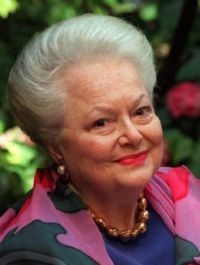
Today Olivia is 96 years old, and has lived in Paris for 60 years. In 1962, she wrote Every Frenchman Has One, a charming account of her early attempts adapting to French life. She recently said, “I love living among the French. They are very independent, intelligent, well educated and creative. They are a people full of feeling, which they express. They're a vivacious people.” Joan Fontaine, 95, lives in Carmel, California. Asked about the feud, Joan said, “I married first, won the Oscar before Olivia did, and if I die first, she'll undoubtedly be livid because I beat her to it! We're getting closer together as we get older, but there would be a slight problem of temperament. In fact, it would be bigger than Hiroshima.” It appears unlikely they will ever bury the hatchet. By the way, their mother was former stage actress Lillian Fontaine. She made several movies and TV appearances as a character actress, beginning with The Lost Weekend in 1945. Her girls haven’t spoken to each other since Lillian’s death, in 1975.
Notes by Paddy Benham